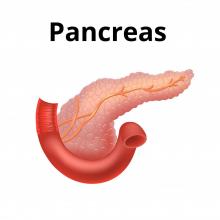Recent Publications
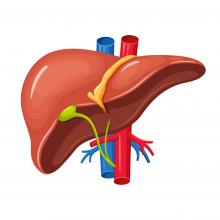
Tawfik Khoury, Wisam Sbeit: Peri-ampullary diverticulum was associated with a higher rate of acute cholangitis among patients with choledocholithiasis (Surg Endosc .)
Choledocholithiasis is a commonly encountered disease that is associated with various clinical presentations ranging from mild form of biliary colic to severe life-threatening acute cholangitis. Recently, peri-ampullary diverticulum (PAD) has been linked to the development of biliary diseases; however, data regarding its association with the development of acute cholangitis in the setting of choledocholithiasis are scarce. We aimed to identify predictors, specifically PAD, for the development of acute cholangitis in patients with choledocholithiasis.
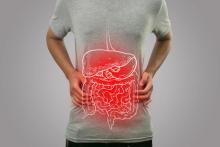
Adi Eshel, Aviel Meoded, Omry Koren: Projection of Gut Microbiome Pre- and Post-Bariatric Surgery To Predict Surgery Outcome (mSystems . )
Bariatric surgery is often the preferred method to resolve obesity and diabetes, with ∼800,000 cases worldwide yearly and high outcome variability. The ability to predict the long-term body mass index (BMI) change following surgery has important implications for individuals and the health care system in general. Given the tight connection between eating habits, sugar consumption, BMI, and the gut microbiome, we tested whether the microbiome before any treatment is associated with different treatment outcomes, as well as other intakes (high-density lipoproteins [HDL], triglycerides, etc.)
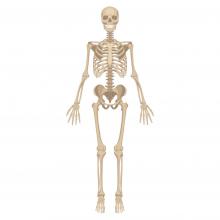
David Karasik: Footprints in the Sand: Deep Taxonomic Comparisons in Vertebrate Genomics to Unveil the Genetic Programs of Human Longevity ( Front Genet .)
Given the genetic constraints between vertebrates, we posit that a combination of approaches, of parallel meta-analysis of human longevity along with refined analysis of other vertebrate clades having exceptional longevity, will aid in resolving key regulators of enhanced lifespan that have proven to be elusive when analyzed in isolation.

Edo Y Birati: Mental Health Disorders and Emergency Resource Use and Outcomes in Ventricular Assist Device Supported Patients (Am Heart J .)
There are limited data describing the prevalence of mental health disorders (MHDOs) in patients with ventricular assist devices (VADs), or associations between MHDOs and resource use or outcomes. We used the Nationwide Emergency Department Sample administrative database to analyze 44,041 ED encounters for VAD-supported adults from 2010 to 2017, to assess the relationship between MHDOs and outcomes in this population. MHDO diagnoses were present for 23% of encounters, and were associated with higher charges and rates of admission, but lower mortality.
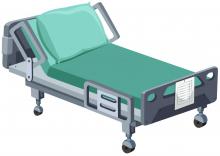
Khalaf Kridin: Is pyoderma gangrenosum associated with solid malignancies? Insights from a population-based cohort study (Australas J Dermatol . )
The question of whether solid malignancies (SMs) are associated with pyoderma gangrenosum (PG) remains to be conclusively answered. Evaluates the risk of SM among patients with PG and the odds of PG after a diagnosis of SM.

Ilan Atlas: The diagnosis of endometrial cancer in women with asymptomatic endometrial polyp does not increase survival rates: an israel gynecologic oncology group study (Maturitas .)
Compares outcomes of symptomatic and asymptomatic women with endometrial cancer and a preoperative diagnosis of an endometrial polyp.

Auditory Performance in Recovered SARS-COV-2 Patients (Otol Neurotol .)
While COVID-19 symptoms impact rhinology (anosmia) and laryngology (airways), two major disciplines of the otolaryngology armamentarium, the virus has seemed to spare the auditory system. A recent study, however, reported changes in otoacoustic emission (OAE) signals measured in SARS-COV-2 positive patients. We sought to assess the effect of COVID-19 infection on auditory performance in a cohort of recovered SARS-COV-2 patients and controls. (Amiel A Dror, Najla Kassis-Karayanni, Adi Oved, Amani Daoud, Netanel Eisenbach, Matti Mizrachi, Doaa Rayan, Shawky Francis, Eli Layous, Yoni Evgeni Gutkovich, Samer Srouji, Shai Chordekar, Sonia Goldenstein, Yael Ziv, Ohad Ronen, Maayan Gruber, Eyal Sela)
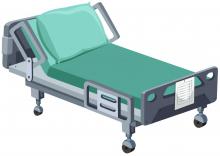
Omar Badran, Anton Ouryvaev, Veronika Baturov, Ayelet Shai: Cytomegalovirus pneumonia complicating immune checkpoint inhibitors-induced pneumonitis: A case report (Mol Clin Oncol .)
A 63-year-old man was hospitalized for immune check-point inhibitors (ICIs) medicated pneumonitis, secondary to treatment with pembrolizumab for non-small cell lung cancer. He was treated with high dose steroids, mycophenolate mofetil, empiric broad spectrum antibiotics and empiric trimethoprim-sulfamethoxazole and intravenous immunoglobulin. Despite the aforementioned treatment, his condition continued to deteriorate. The patient was admitted to the intensive care unit. While intubated, he underwent bronchoscopy and lavage, which was analyzed for potential infectious agents. Cytomegalovirus (CMV) pneumonia was diagnosed and treated. He passed away despite antiviral treatment and maximal supportive care. CMV infection should be suspected in patients failing to recover from toxicities of ICIs with appropriate immunosuppression.

Khalaf Kridin: Coronavirus Disease 2019 (COVID-19)-Associated Hospitalization and Mortality in Patients with Psoriasis: A Population-Based Study (Am J Clin Dermatol . )
The impact of immune-related conditions on the outcomes of coronavirus disease 2019 (COVID-19) is poorly understood. Determinants of COVID-19 outcomes among patients with psoriasis are yet to be established. The objective of this study was to characterize a large cohort of patients with psoriasis with COVID-19 and to identify predictors of COVID-19-associated hospitalization and mortality.

Ayelet Shai: Risk-Reducing Mastectomy and Reconstruction Following Prophylactic Breast Irradiation: Hope Sustained (Cancers (Basel) .)
Risk-reducing mastectomy (RRM) is often advocated for BRCA1/2 mutation carriers who face a heightened lifetime risk of breast cancer. However, many carrier patients seek alternative risk-reducing measures. In a phase II nonrandomized trial, we previously reported that prophylactic irradiation to the contralateral breast among BRCA carriers undergoing breast-conserving treatment significantly reduced subsequent contralateral breast cancer. Herein, we report the outcome of salvage mastectomy and reconstruction in 11 patients that suffered reoccurrences of breast cancer in either the ipsilateral or contralateral breast or elected to have the procedure for risk reduction during the eight-year follow-up period.
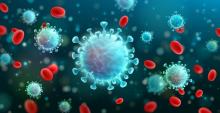
Matti Mizrachi, Majd Hajouj, Nethanel Eizenbach, Eyal Sela: COVID-19 classification of X-ray images using deep neural networks (Eur Radiol .)
In the midst of the coronavirus disease 2019 (COVID-19) outbreak, chest X-ray (CXR) imaging is playing an important role in diagnosis and monitoring of patients with COVID-19. We propose a deep learning model for detection of COVID-19 from CXRs, as well as a tool for retrieving similar patients according to the model's results on their CXRs. For training and evaluating our model, we collected CXRs from inpatients hospitalized in four different hospitals.
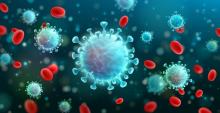
Khalaf Kridin, Avi Peretz, Erez Onn: Tumor necrosis factor inhibitors are associated with a decreased risk of COVID-19-associated hospitalization in patients with psoriasis- A population-based cohort study (Dermatol Ther . )
The risk of coronavirus disease 2019 (COVID-19) and its complications among patients with psoriasis treated by tumor necrosis factor inhibitors (TNFis) remains to be decisively delineated. We aimed to assess the risk of COVID-19 infection, COVID-19-associated hospitalization, and mortality among Israeli patients with psoriasis treated by TNFi relative to other systemic agents.

Kolluru D Srikanth, Hava Gil-Henn: Cell adhesion factors in the orbitofrontal cortex control cue-induced reinstatement of cocaine seeking and amygdala-dependent goal seeking (J Neurosci .)
Repeated cocaine exposure causes dendritic spine loss in the orbitofrontal cortex, which might contribute to poor orbitofrontal cortical function following drug exposure. One challenge, however, has been verifying links between neuronal structural plasticity and behavior, if any. Here we report that cocaine self-administration triggers the loss of dendritic spines on excitatory neurons in the orbitofrontal cortex of male and female mice (as has been reported in rats).




